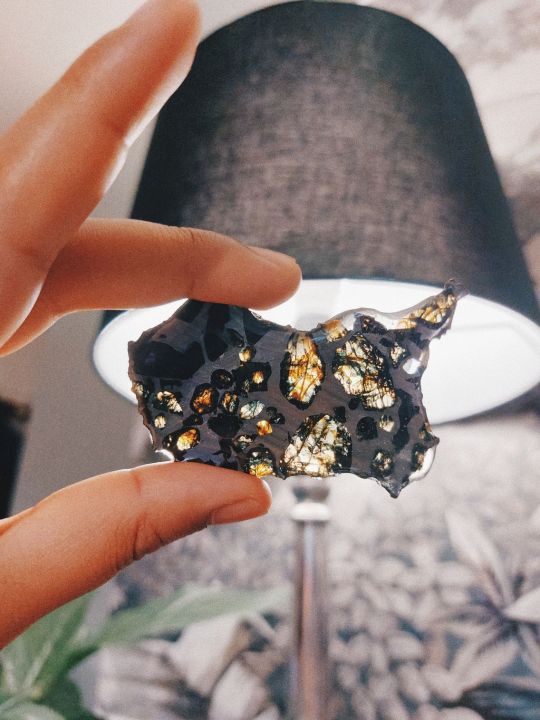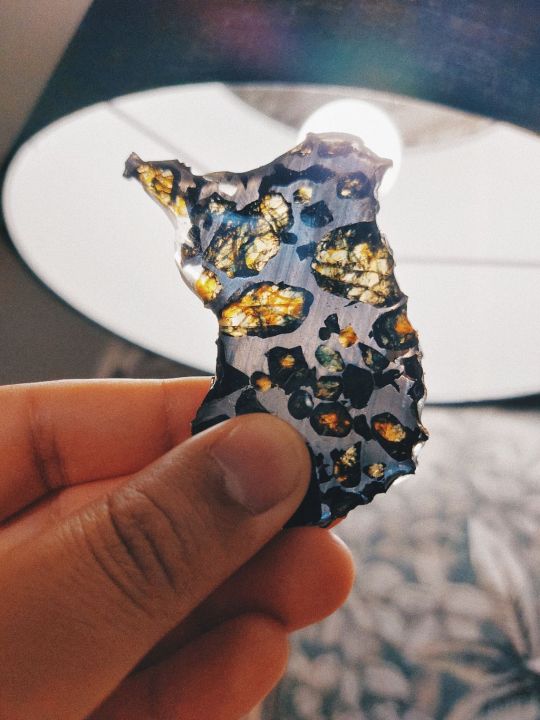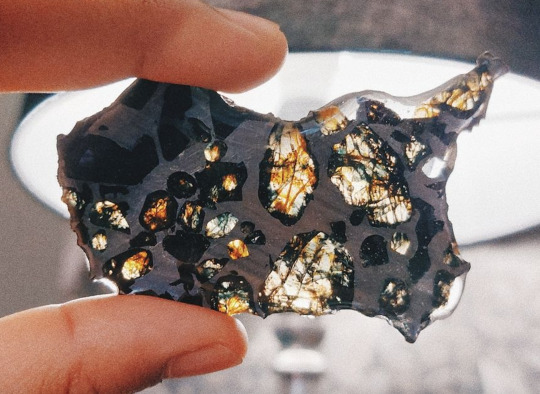#not really fieldwork per se but i'm trying to be consistent with my tagging alas
Photo




The Meteorite Edit
A new acquisition for the budding rock collection – a slice of the Sericho pallasite! This beautiful specimen was once part of an asteroid’s core–mantle boundary, and similar stony iron meteorites are some of our best proxies for the Earth’s own interior. Here you can see megacrysts of olivine in gemmy green and orange, suspended in an iron–nickel groundmass. The olivine has characteristic curvilinear fractures, but also several sub–parallel shock fractures, possibly formed on impact. The free metal groundmass has apparent mm–scale banding, a characteristic of octahedrite Widmanstatten patterns (apparent I say because Widmanstatten patterns can only be seen after acid etching, and I don’t know how the sample was prepared – in the case that this was an over–enthused interpretation, I offer the lesser alternative of mechanical scratches from slicing).
Pallasites are thought to have formed during magma ocean differentiation on larger asteroids. The heat generated by short lived radionuclides and high interior pressures leads to melting and density segregation into an iron core and a silicate magma ocean. As this too cools, denser crystal–rich melts will settle as olivine cumulates, aided by convection and crustal foundering. At the core–mantle interface, the molten metal of the core is thus mixed with the olivine cumulates, resulting in stony iron formation. Small asteroidal bodies cannot stay hot for long, and so will ‘freeze’ at some point in their early histories. Impacts can break up these solidified asteroids and reassemble them into rubble piles – or they can send them hurtling our way, which is what happened with Sericho, and why we can observe what we can today!

#geology#planetary science#space#meteorites#the literal coolest thing i own#an honest to god meteorite#at least i'm 95% certain that it is a meteorite#since pallasites are notoriously difficult to fake#science#stem#pallasite#asteroids#science meets art#dark academia aesthetic#field sketches#not really fieldwork per se but i'm trying to be consistent with my tagging alas
864 notes
·
View notes